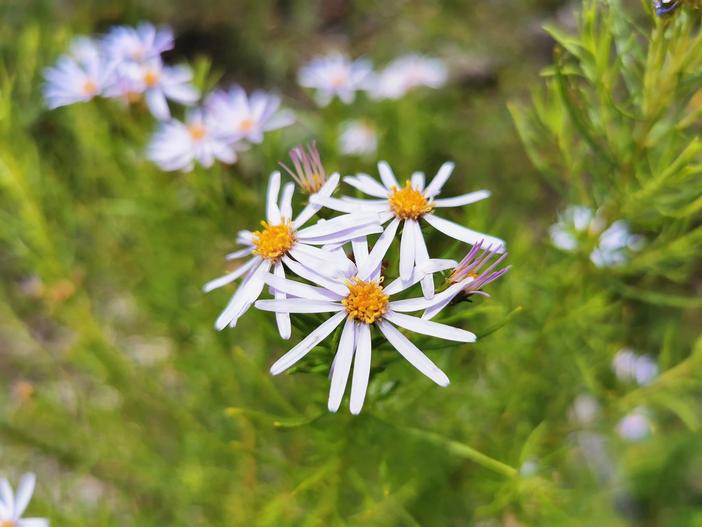Thin-Leaf Daisy-Bush
(Olearia tenuifolia)
Thin-Leaf Daisy-Bush (Olearia tenuifolia)
/
/

Margaret Donald
CC BY-SA 2.0
Image By:
Margaret Donald
Recorded By:
Copyright:
CC BY-SA 2.0
Copyright Notice:
Photo by: Margaret Donald | License Type: CC BY-SA 2.0 | License URL: https://creativecommons.org/licenses/by-sa/2.0/ | Uploader: MargaretDonald | Publisher: Flickr










Estimated Native Range
Summary
Olearia tenuifolia, commonly known as Thin-Leaf Daisy-Bush, is an evergreen shrub native to the open woodlands and forest margins of Eastern Australia. It typically grows to a height of 2 meters (6 feet 7 inches) and features narrow, linear leaves arranged alternately along the stem. The leaves are 5–35 mm (0.20–1.38 in) long and 1–2.5 mm (0.039–0.098 in) wide, with pointed tips and margins that are either smooth or toothed and distinctly rolled under. Both surfaces of the leaves are glandular. This shrub is notable for its clusters of blue, deep mauve to purple flowers, each with a yellow disc floret. The flowers are borne singly or in loose clusters at the end of branches on a peduncle 30 mm (1.2 in) long and can appear at various times throughout the year, making it a versatile addition to gardens. The fruit is a dry, silky achene.
The Thin-Leaf Daisy-Bush is valued for its long flowering season and its ability to attract pollinators such as bees and butterflies. It is well-suited for use in mixed borders, as a specimen plant, or in native plant gardens. This shrub thrives in full sun to part shade and prefers soils with medium to fast drainage, requiring low to medium amounts of water once established. While it is relatively low-maintenance, it may benefit from pruning to maintain its shape and encourage denser growth. There are no significant disease problems, but it may be susceptible to root rot in poorly drained soils.CC BY-SA 4.0
The Thin-Leaf Daisy-Bush is valued for its long flowering season and its ability to attract pollinators such as bees and butterflies. It is well-suited for use in mixed borders, as a specimen plant, or in native plant gardens. This shrub thrives in full sun to part shade and prefers soils with medium to fast drainage, requiring low to medium amounts of water once established. While it is relatively low-maintenance, it may benefit from pruning to maintain its shape and encourage denser growth. There are no significant disease problems, but it may be susceptible to root rot in poorly drained soils.CC BY-SA 4.0
Plant Description
- Plant Type: Shrub
- Height: 4-6 feet
- Width: 4-6 feet
- Growth Rate: Moderate
- Flower Color: White, Pink, Purple
- Flowering Season: Spring, Summer, Fall
- Leaf Retention: Evergreen
Growth Requirements
- Sun: Full Sun, Part Shade
- Water: Low, Medium
- Drainage: Medium, Fast
Common Uses
Bee Garden, Butterfly Garden, Drought Tolerant, Low Maintenance
Natural Habitat
native to the open woodlands and forest margins of Eastern Australia
Other Names
Common Names: Shiny Daisy Bush
Scientific Names: , Olearia tenuifolia, Eurybia tenuifolia, Eurybia tenuifolia var. bathurstiana, Eurybia tenuifolia var. tenuifolia, Shawia tenuifolia,
GBIF Accepted Name: Olearia tenuifolia (DC.) Benth.